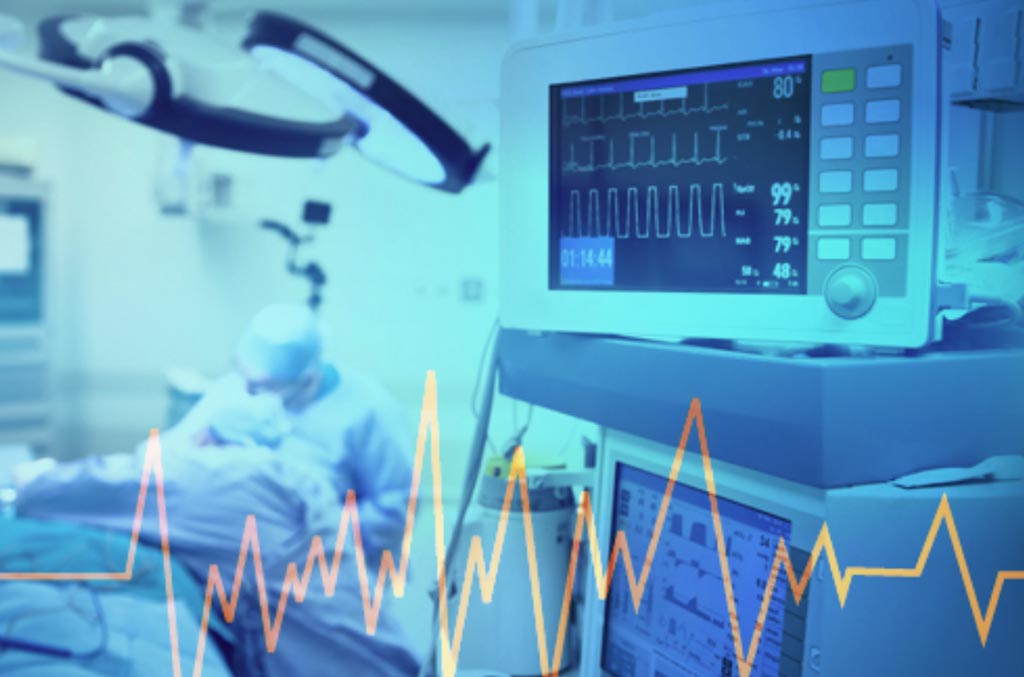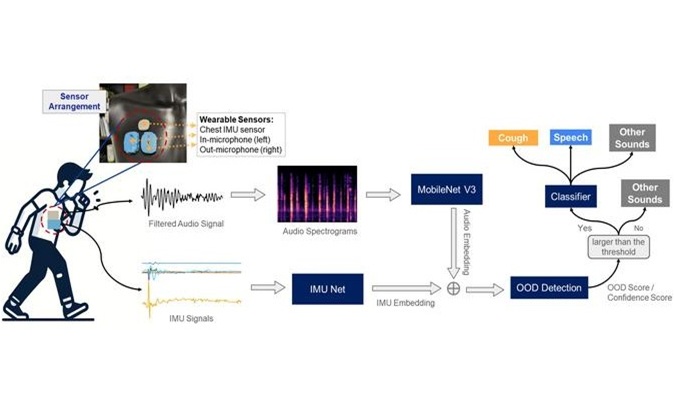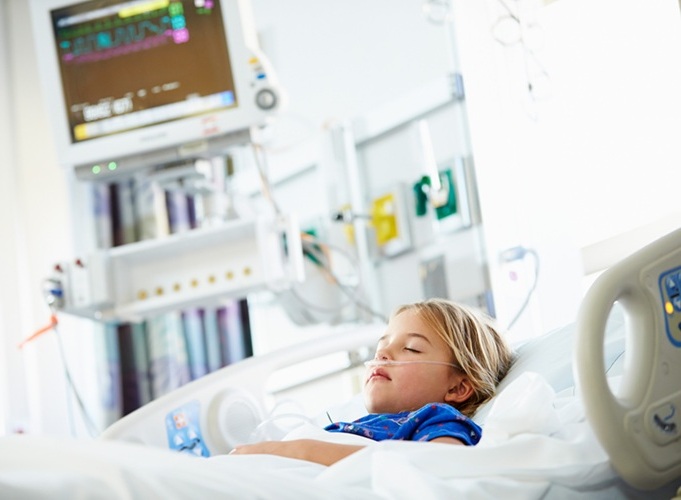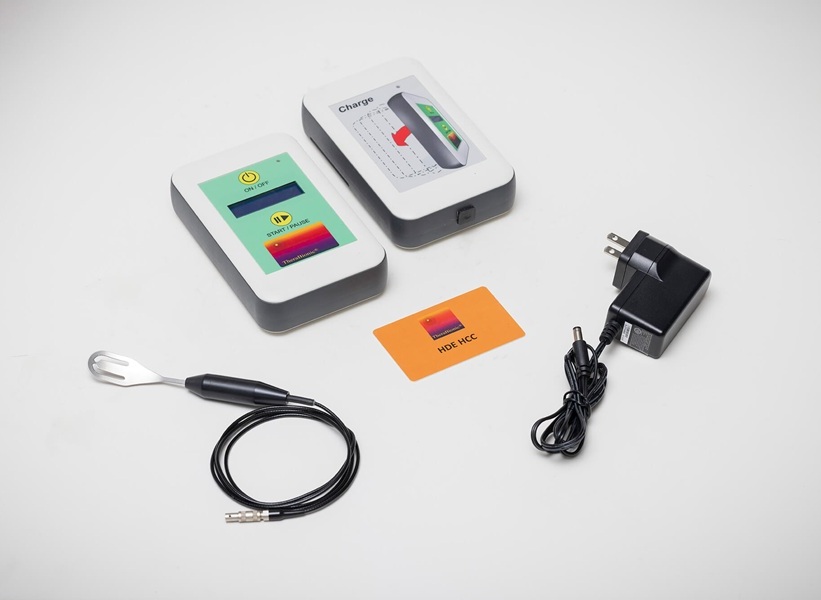Patient Monitoring Devices Market to Reach Almost USD 38 Billion by 2028 Due to Increased Chronic Diseases
|
By HospiMedica International staff writers Posted on 25 Oct 2021 |

The global patient monitoring devices market is projected to reach close to USD 38 billion by 2028, driven primarily by increasing prevalence of chronic diseases and technological advancements.
These are the latest findings of Coherent Market Insights (Seattle, Wash., USA), a market research firm.
Patient monitoring devices, also called medical monitors, are medical instruments that allow health care professionals to remotely monitor the vital signs of a patient, including pulse rate, blood pressure, skin temperature, and respiration, using small, wireless transmitter-receivers that are carried or worn by the patient. These transmitter-receivers are typically attached to a belt or other personal item that enables the caregiver to readily check a patient's vital signs. This enables the caregiver to quickly identify any irregularities in the patient's bodily functions, such as a falling temperature or persistent sweating. Some monitoring systems come with extra sensors that can detect when a patient moves, making it possible to instantly inform the medical professional that something isn't working according to normal.
The increasing prevalence of chronic diseases is expected to drive the growth of the global patient monitoring devices market during the forecast period. Chronic diseases such as cancer, hypertension, cardiovascular diseases (CVD), and diabetes are on the rise. According to the World Health Organization (WHO), in 2018, around 9.6 mn died due to cancer with over 300,000 new cases of cancer being diagnosed each year among children aged 0-19 years across the globe. According to the same source, around 17.9 mn people die each year from cardiovascular disease worldwide. Patient monitoring devices such as wearable heart monitors, glucose monitors, skin patches, and Bluetooth-enabled scales aid clinicians keep track of patients' health constantly.
Additionally, technological advancements are expected to propel the global patient monitoring devices market growth over the forecast period. Patient monitoring systems have improved significantly over the years with the availability of IoT-enabled devices, shoes, belts, non-invasive devices, and wearable to monitor different organs of the human body. These devices are easy to wear and can provide real-time data and analysis of the human body, enabling clinicians to provide prompt healthcare service.
Moreover, the increasing demand for non-invasive or minimally invasive devices will present lucrative growth opportunities for market growth. Patients are more inclined towards non-invasive or minimally invasive devices as these devices provide painless recording of different parameters such as blood pressure, pulse oximeter, electrocardiogram, oxygen analyzer, and more. Also, the rising demand for patient monitoring devices in non-hospital settings will provide significant business opportunities for the global patient monitoring devices market. There are various patient monitoring devices that can be used in non-hospital settings such as glucose monitor, pulse oximeter, and infrared temperature gun. As a result, the adoption of these devices has increased in the home, commercial, and industrial settings as well.
Cardiac monitoring systems are witnessing high demand. According to the WHO, cardiovascular disease (CVD) is the major cause of death across the globe. As a result of this, the demand for cardiac monitoring systems has increased across hospitals and clinics. With rising cases of CVD combined with the launch of new products and proactive government initiatives, cardiac monitoring systems are expected to witness high demand over the forecast period. Geographically, the North American patient monitoring devices market is expected to witness significant growth owing to increasing incidence of chronic diseases such as cancer and CVD, coupled with the presence of robust healthcare facilities in the region.
Related Links:
Coherent Market Insights
Latest Business News
- Philips and Masimo Partner to Advance Patient Monitoring Measurement Technologies
- B. Braun Acquires Digital Microsurgery Company True Digital Surgery
- CMEF 2025 to Promote Holistic and High-Quality Development of Medical and Health Industry
- Bayer and Broad Institute Extend Research Collaboration to Develop New Cardiovascular Therapies
- Medtronic Partners with Corsano to Expand Acute Care & Monitoring Portfolio in Europe
- Expanded Collaboration to Transform OR Technology Through AI and Automation
- Becton Dickinson to Spin Out Biosciences and Diagnostic Solutions Business
- Boston Scientific Acquires Medical Device Company SoniVie
- 2026 World Hospital Congress to be Held in Seoul
- Teleflex to Acquire BIOTRONIK’s Vascular Intervention Business
- Philips and Mass General Brigham Collaborate on Improving Patient Care with Live AI-Powered Insights
- Arab Health 2025 Celebrates Landmark 50th Edition
- Boston Scientific Acquires Medical Device Company Intera Oncology
- MEDICA 2024 to Highlight Hot Topics of MedTech Industry
- Start-Ups To Once Again Play Starring Role at MEDICA 2024
- Boston Scientific to Acquire AFib Ablation Company Cortex
Channels
Critical Care
view channel
Origami Robots to Deliver Medicine Less Invasively and More Effectively
Delivering medicine to ulcers or other internal sites often requires invasive procedures that can disrupt surrounding tissues and lengthen recovery times. Traditional magnetic actuators used in soft robotics... Read more
Improved Cough-Detection Technology Aids Health Monitoring
Coughing serves as an important biomarker for tracking a variety of conditions and can help monitor the progress of respiratory diseases or predict when someone’s asthma is being exacerbated.... Read moreSurgical Techniques
view channel
Novel Glue Prevents Complications After Breast Cancer Surgery
Seroma and prolonged lymphorrhea are among the most common complications following axillary lymphadenectomy in breast cancer patients. These postoperative issues can delay recovery and postpone the start... Read more
Breakthrough Brain Implant Enables Safer and More Precise Drug Delivery
Delivering medication directly to specific regions of the brain has long been a major challenge in treating neurological disorders. Current implants and infusion systems typically reach only one or two... Read morePatient Care
view channel
Revolutionary Automatic IV-Line Flushing Device to Enhance Infusion Care
More than 80% of in-hospital patients receive intravenous (IV) therapy. Every dose of IV medicine delivered in a small volume (<250 mL) infusion bag should be followed by subsequent flushing to ensure... Read more
VR Training Tool Combats Contamination of Portable Medical Equipment
Healthcare-associated infections (HAIs) impact one in every 31 patients, cause nearly 100,000 deaths each year, and cost USD 28.4 billion in direct medical expenses. Notably, up to 75% of these infections... Read more
Portable Biosensor Platform to Reduce Hospital-Acquired Infections
Approximately 4 million patients in the European Union acquire healthcare-associated infections (HAIs) or nosocomial infections each year, with around 37,000 deaths directly resulting from these infections,... Read moreFirst-Of-Its-Kind Portable Germicidal Light Technology Disinfects High-Touch Clinical Surfaces in Seconds
Reducing healthcare-acquired infections (HAIs) remains a pressing issue within global healthcare systems. In the United States alone, 1.7 million patients contract HAIs annually, leading to approximately... Read moreHealth IT
view channel















